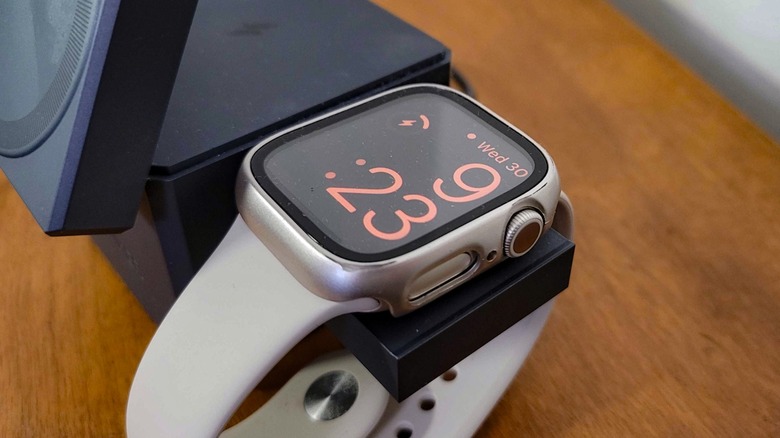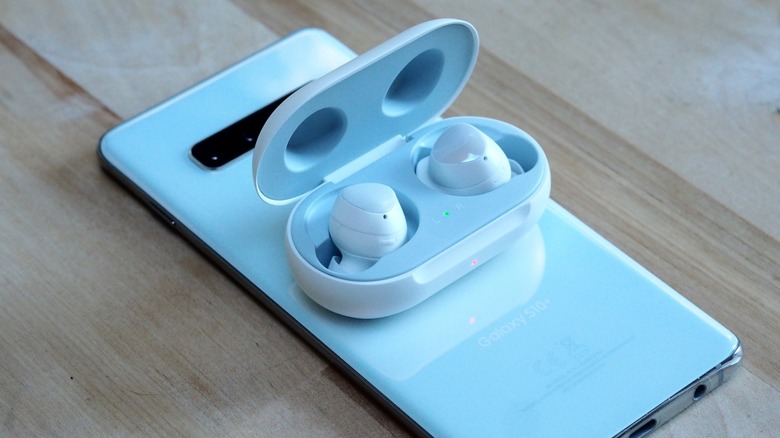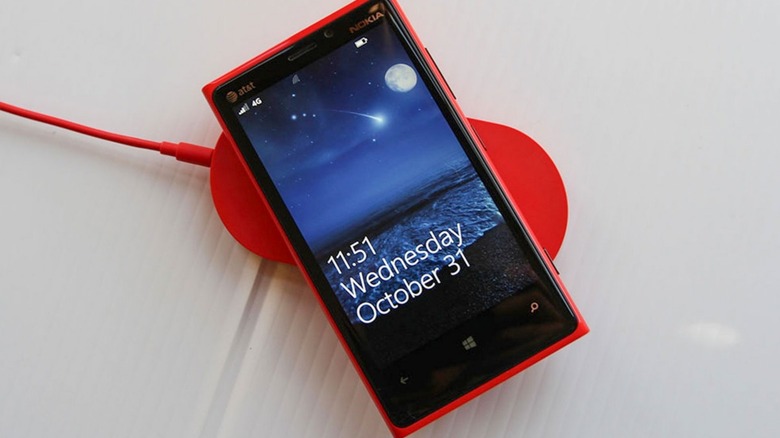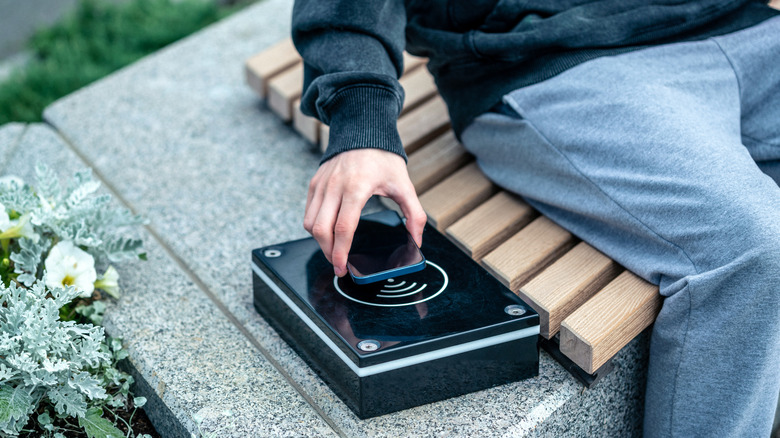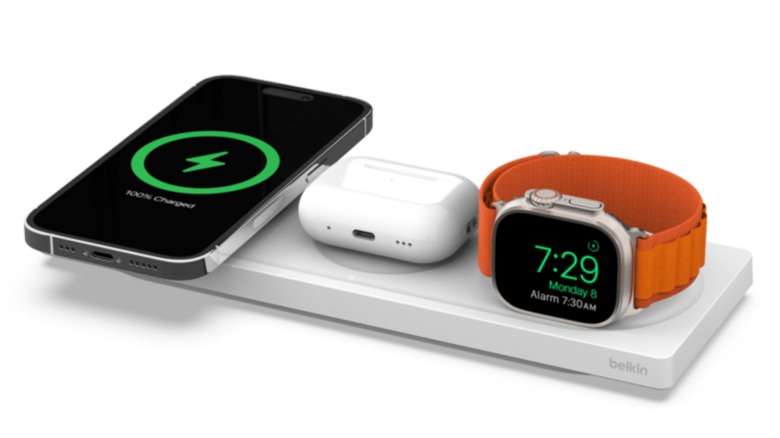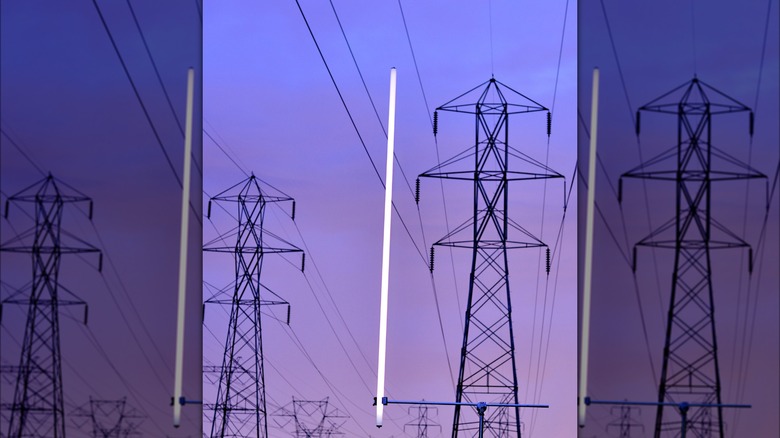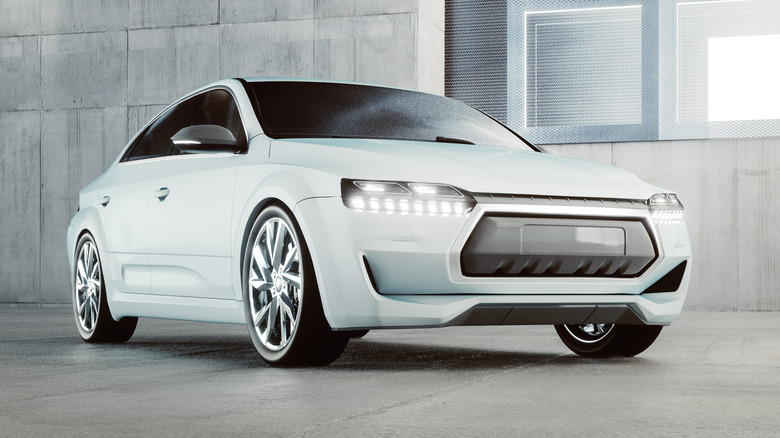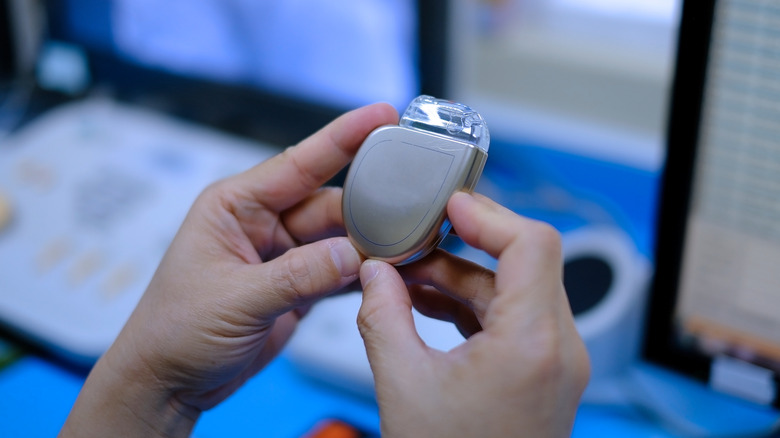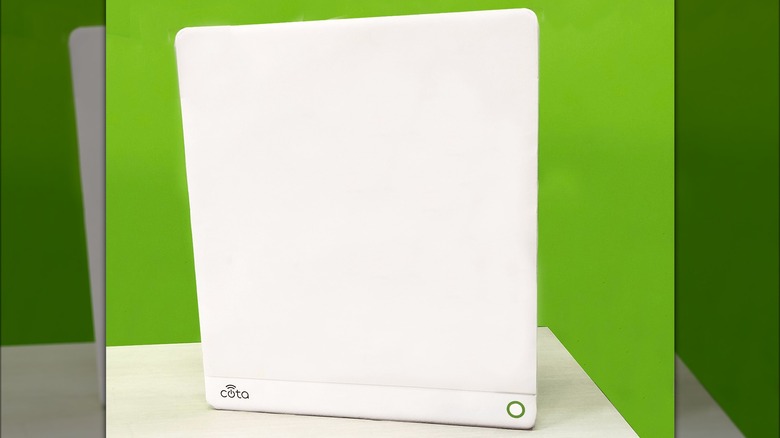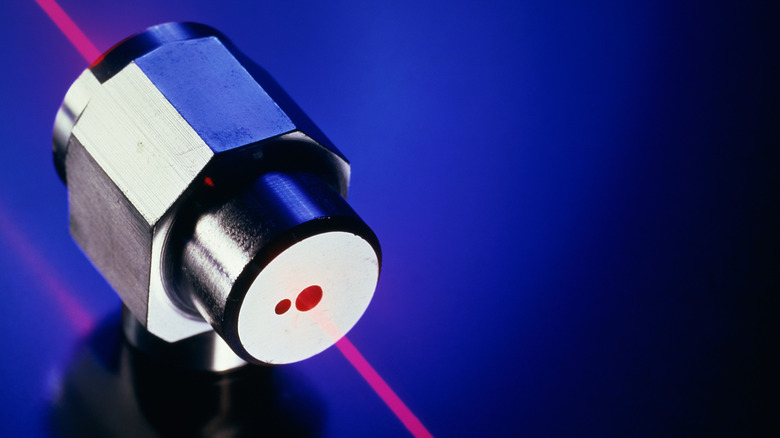How Does Wireless Charging Work? A Scientific Explanation
All electronic devices require a power source. Most objects can just be plugged into a wall socket, and the gadget will never run out of juice – blackouts notwithstanding. Portable devices, however, require portable sources of electricity, usually in the form of batteries. While many lightweight devices accept disposable batteries, a growing number rely on built-in rechargeable packs that can be periodically topped off.
Initially, built-in batteries were primarily recharged by plugging them into wall sockets via cables. This technique is still commonplace, but wireless charging is quickly becoming more popular. Unlike wired charging, you don't have to plug your battery-powered device into anything, but this raises more questions than it answers.
For instance, if you're not plugging your device into a wall socket or power outlet, how is the electricity flowing into the battery? Didn't all our science teachers tell us in school that you need a physical connection to create a circuit? Well, yes, but wireless charging goes beyond high school science lessons. In order to understand how this technology works, you need an electrical engineering degree from an accredited college. Of course, if you don't want to spend four years and over $30,000 pursuing one, you can always read this article.
What is wireless charging?
At first glance, wireless charging is a simple concept, but like the devices that make wireless charging possible, the more you dive into the subject, the more complicated it gets.
Wireless charging — also known as wireless power transfer, wireless power transmission, and wireless energy transmission — is the transfer of electricity from a source to a receiver without wires connecting the two. Since wireless charging doesn't require you to insert a cable into the device you're powering up, this method of energy replenishment has several advantages. You don't have to constantly plug and unplug wires to charge your device, reducing the wear and tear of the cable and socket. Plus, most wireless chargers are sealed, so you don't have to worry about accidentally shocking yourself by touching one, although there are exceptions to this rule.
At its core, wireless charging is a generic catch-all term. The exact method takes a variety of forms, each with its own pros, cons, and mechanics. Aside from transferring or at least utilizing electricity, the only factor all wireless chargers have in common is their distinct lack of wire clutter.
How wireless charging generally works
If you know how a radio works, you know how a wireless charger works. Well, that's actually an oversimplification, but not by much.
To put it as simply as possible, a wireless charger takes an alternating electrical current, uses a frequency converter to change the energy into a medium that doesn't require wires, and then beams that medium out through a coupling element. A receiver, which usually mirrors the coupling element, then accepts the electromagnetic field that has been created before pushing it through a frequency converter to change it back into an alternating current, and finally shoots that electricity into the receiving device.
The exact process changes depending on the mediums in play, as some are better in certain circumstances than others, but at the end of the day, most wireless chargers function the same as wireless communication devices but with different frequencies to accommodate energy instead of data.
Arguably the most common and safest form of wireless charging mediums is magnetic waves, but it is one of many. Wireless chargers can also use electric fields (which are technically different from electric currents), radio waves, microwaves, and even different spectrums of light. However, there is no such thing as a universal coupling element, so each medium requires a different type. These include coils of wire, metal plates, antennae, magnets, and even lasers. Given the sheer number of medium choices, you might wonder how anyone chooses what kind of wireless charger they want. Primarily, it all comes down to distance.
Types of wireless charging
When using electric charging cables, you have to constantly insert and remove them from the device you want to charge. However, wireless chargers can be set up, synced with your device, and simply moved out of range when you're ready to go. So, how far is too far away for a wireless charger? It all depends on the medium.
Wireless chargers are lumped into two categories: near-field and far-field. This name stems from the regions of an electromagnetic field near a wireless charge transmitter, which is typically referred to as an antenna. If the antenna produces a medium that weakens with distance, then the charger is considered a near-field device. If the distance has little to no effect on the power provided, then the device is considered far-field.
However, since every medium vibrates at different wavelengths, what constitutes near" and "far changes from charger to charger. Generally speaking, If the receiver can be placed more than one wavelength away from the antenna, then the charger is considered far-field. Otherwise, it's near-field.
Devices that use or convert currents to magnetic or electric fields generally fall under the near-field category. Meanwhile, wireless chargers that utilize microwaves, radio waves, lasers, and even plasma are considered far-field devices. These cover the majority of wireless charging gadgets out there, but some devices, such as resonant chargers, don't fall into the above categories. These devices aren't efficient at normal near-field or far-field distances, making them some of the only, for lack of a better term, mid-field wireless chargers around.
Inductive coupling
When most people talk about wireless charging, they think of pads you can use to charge your smartphone and those tiny stands you can place electric toothbrushes on. This is not surprising since those are the most common styles of wireless chargers and all use the same method — inductive coupling.
Inductive coupling converts alternating electrical currents to magnetic fields and sends them out using copper wire induction coils. The receiving device then uses its own induction coils to accept the magnetic fields, which are then converted back into electric currents via the same process in reverse. Essentially, these coils function like a pair of transformers, and because an inductive coupling field's frequency and antennae are so small, power drops off exponentially the further away the receiver is from the transmitter. This issue can be fixed by using more power or increasing the size of the transmitter and receiver coils, but that isn't feasible with devices like cell phones, which is why you have to place them on top of the wireless charger.
Inductive coupling, especially for phones, currently comes in two standards, Qi and PMA. Qi chargers use 100 to 205 kHz fields, whereas PMA uses 277 to 357 kHz fields. Furthermore, since Qi and PMA devices utilize different connection protocols, Qi devices aren't compatible with PMA chargers and vice versa. Regardless, Qi wireless charging is widely considered the standard for most inductive coupling wireless chargers.
Work is underway to utilize inductive coupling for electric vehicles. One day we could see gasless cars charged in their own garages or while driving down roads. However, progress is slow due to prohibitive costs, potential damage to roadways, and possible threats to people with pacemakers.
Resonant inductive coupling
While inductive coupling chargers are far gentler to a device's USB ports, you still have to worry about charging range. If your power cable doesn't reach that far, an inductive coupling pad won't fix that — unless you go the extra mile to make the transmitter and receiver resonate in sync.
Resonant inductive coupling functions very similarly to normal inductive coupling. You've got one induction coil beaming out magnetic waves and another one receiving them. Both function like transformers, but the addition of resonant circuits lets charger and chargee resonate at the same frequency, thereby significantly increasing the range of the magnetic field before its power drops off.
On the one hand, this means that resonant inductive coupling could potentially charge mobile devices anywhere within several meters of the charger. On the other hand, devices too close to the resonant inductive coupling transmitter will be subject to frequency splitting. This phenomenon splits the magnetic field frequency into two peaks and impedes wireless charging.
Scientists have only recently explored resonant inductive coupling's potential. Not only can users charge all the devices compatible with vanilla inductive coupling charging pads, but scientists have figured out how to wirelessly power superconducting MAGLEV trains and are trying to apply resonant inductive coupling technology to biomedical implants. It might take a few years or decades, but the future is looking wireless.
Capacitive coupling
Since inductive coupling uses magnetic fields, it is relatively safe for use around human bodies. Moreover, because inductive coupling is the most common form of wireless charging, one might assume that most, if not all, wireless chargers are human-friendly. However, this couldn't be further from the truth.
Capacitive coupling, also known as electrostatic induction, creates an electric field between two electrodes or conductive plates. These wireless chargers still convert alternating electrical currents to fields in much the same way as inductive coupling chargers, but since they rely on electrical fields instead of magnetic ones, capacitive couplers are less vulnerable to interference and don't need as much shielding. This cuts down on a wireless charger's mass and manufacturing costs. Moreover, capacitive coupling chargers don't have as strict alignment requirements, so devices can be a little more askew on capacitive couplers and still receive power.
In every field of science, advantages usually come with a few caveats, and capacitive coupling is no different. Unlike inductive coupling's magnetic fields, capacitive coupling's electric fields don't cooperate with the human body. At best, flesh and blood can impede the flow of energy. At worst, capacitive coupling can injure anyone who gets in the way. Moreover, capacitive coupling's performance is limited to low voltages, as high voltages can be dangerous to the electrodes and also produce ozone.
[Featured image by BaronAlaric via Wikimedia Commons | Cropped and scaled | CC BY-SA 3.0]
Magnetodynamic coupling
While inductive coupling chargers use and produce magnetic fields to transfer energy, they aren't magnets. Some wireless chargers, however, use magnetic fields with magnets to produce electrical charges without transferring any power.
Magnetodynamic coupling is a unique form of wireless charging that relies on rotating magnets. Unlike most forms of wireless charging, magnetodynamic coupling utilizes mechanical engineering principles more than electric engineering ones. In a magnetodynamic charger, one primary magnet — the transmitter — is connected to a part of a motor, which makes it turn. As that magnet turns, its magnetic field exerts torque on a secondary magnet — the receiver — making it rotate in turn. This magnet, usually connected to an armature of some kind, powers up a generator as it moves by producing its own electrical current. Ultimately, magnetodynamic coupling acts a lot like a spring-powered toy you have to wind up, except with magnets and electricity.
While magnetodynamic coupling is somewhat rare, it serves as a novel solution to charging electric vehicles and even certain pacemakers. Back in 2014, researchers at the University of British Columbia in Vancouver demonstrated that this wireless charging system has a range of up to six inches with over 90% efficiency. Since it runs on magnetic fields, magnetodynamic coupling isn't susceptible to errant radio disruption. Not bad for a system that converts electrical energy into two different forms and then back again, which is two more conversion steps than most wireless charging devices.
Electrodynamic wireless power transfer
So if inductive coupling chargers produce magnetic fields — but they aren't magnets — while magnetodynamic coupling chargers utilize magnets, what happens when you combine a magnetic field-producing device with a magnet? The answer is yet another breed of wireless charger.
Electrodynamic wireless power transfer is half inductive coupling and half magnetodynamic coupling. Everything starts at the transmitter, which is a coil that produces a magnetic frequency. The receiver also utilizes a coil, as well as a permanent magnet attached to a rotor. The magnetic field interacts with the receiver coil's magnet, exerting torque on it. This mechanical motion produces voltage and power to the attached device. So what sets this charging method apart from others? For starters, most wireless chargers that produce magnetic fields create high-frequency waves, whereas electrodynamic wireless power transfer devices utilize low-frequency fields in the 10s to 100s Hz range.
Electrodynamic wireless power transfer's magnetic fields pass through electrically conductive media, and their frequencies are much safer for humans, making them ideal for charging biomedical implants. Electrodynamic charging can potentially be used in rooms full of people to charge their implants, as well as power cell phones and other devices, without causing any negative side effects.
However, while distance hasn't posed much of an obstacle to the amount of power a device receives, during experiments in 2013 and 2014, the electrodynamic wireless power transfer receiver sizes were too large for the researchers' tastes. As such, it might take a while until this charging system becomes commercially available.
Zenneck wave transmission
Zenneck Wave Transmission uses nonuniform electromagnetic plane waves that form parallel to two interfaces (i.e. touching surfaces) made out of similar materials with different electrical energy storage capabilities. These waves can be excited at these interfaces using ground-backed impedance resonators and two half-wave helical coils. When high-frequency alternating currents are fed through the resonator, the main helical coil carries the current, and the secondary coil builds up voltage. When this happens, the ground-backed impedance resonator creates a transverse magnetic wave, thus allowing energy to transfer across the surface of the interface.
This relatively new method of wireless transfer has several advantages and disadvantages. Zenneck waves are not affected by leaky shielding, which lets them transfer power far more efficiently, but since these waves are nonradiative, they can't transfer energy past their interfaces. According to a 2020 study, using Zenneck waves to transfer energy across the Earth as a conductor isn't practical, but many examples of metallic infrastructure — such as railway tracks, pipelines, and nuclear plants — can take advantage of this wireless charging method.
Imagine a factory where an assembly device is powered just by placing it on a metallic floor. That sounds like something you'd only find in a video game, but it's possible through Zenneck waves.
Microwaves
When most people hear the word microwaves, they think of microwave appliances. These devices use microwaves (electromagnetic radiation in the centimeter to millimeter range) to produce thermal energy. However, microwaves — the energy, not the appliance — can do more than just heat up food.
Researchers are hard at work figuring out how to channel microwaves to provide power. In 2013, the Physicist Hatem Zeine unveiled the Cota wireless power transmission system, manufactured by Ossia, which used microwaves to beam energy to a receiver 30 feet away. His device transmitted power using the same microwave frequency as Wi-Fi routers, which made it safe for humans.
Other researchers have also gone one step further and tried to develop devices that generate energy while they beam it. One such solution was to use a solar power satellite that absorbed sunlight, converted it into energy, and then transformed the energy into microwaves that would be beamed down to a collection facility. Sounds promising, but depending on the wavelength, the proposed satellite's antenna requirements would have been astronomical. Beaming the power in shorter wavelengths could cut down on antenna size, but the microwaves would be more susceptible to atmospheric absorption. There's always a catch.
Lasers
Science fiction is full of devices that weaponize visible light to devastating results. Colloquially referred to as lasers, these devices can kill by pumping their targets full of energy or cutting right through them. A far cry from lasers in the real world — most lasers, anyway.
However, scientists have discovered how to transport energy wirelessly via laser beams. The process consists of converting an electrical current into a high-power laser and shooting it in any direction. Unlike other wireless charging devices, which consist of mirrored processes and hardware, laser chargers require specialized parts known as photovoltaic diodes to catch the lasers. From there, the process of converting lasers to electrical current is essentially the same as with normal solar panels — the semiconductor releases electrons when exposed to sunlight, thus producing an electrical charge that is converted to an alternating current by an inverter. However, since lasers contain far more photons than normal sunlight, they provide much more electricity.
Unlike other forms of wireless charging, lasers can deliver energy over vast distances with minimal losses. Moreover, only devices designed to pick up the lasers would receive any power from them, and the charger itself can be quite small for the amount of power it provides. However, since laser power beaming relies on line of sight, anything that blocks the light, such as clouds or people, will prevent charging. At least advances in technology will guarantee that the laser shuts off if anyone steps in front of it, thus preventing death by laser. Presumably, anyway.
Atmospheric plasma channel coupling
Most people know that matter comes in three states: solid, liquid, and gas. However, there is a fourth state, plasma, that only exists under certain conditions. This highly specialized matter has several amazing properties, including the ability to carry tons of electricity in the blink of an eye — or should we say in a flash of lightning?
Atmospheric plasma channel coupling, also known as an electrolaser, is yet another form of wireless charging that utilizes a laser, but instead of using the laser as a channel to provide energy, it uses a laser to create the channel. This laser superheats surrounding gasses until it ionizes them and creates a plasma channel. This laser-induced plasma exists for a brief second but is superconductive enough to form a powerful electric arc. The result is something akin to a lightning bolt, mostly because lightning is actually plasma.
Electrolasers have numerous functions, including a long-range taser that can incapacitate or even kill its target and a method to guide lightning. While the latter can keep lightning bolts away from potentially sensitive targets, scientists in France and Germany teamed up to create the Teramobile, a laser-induced plasma channel device that could agitate clouds with lasers and harvest the resulting lightning bolts.
While that is one form of atmospheric plasma channel coupling, another form could come in the shape of a patented device that would presumably create a plasma channel and then shoot energy along it to a charging rod. Using electrolasers as a wireless charger is still in its infancy, but one day we might be able to farm and deliver gigajoules worth of energy at the speed of lightning.
